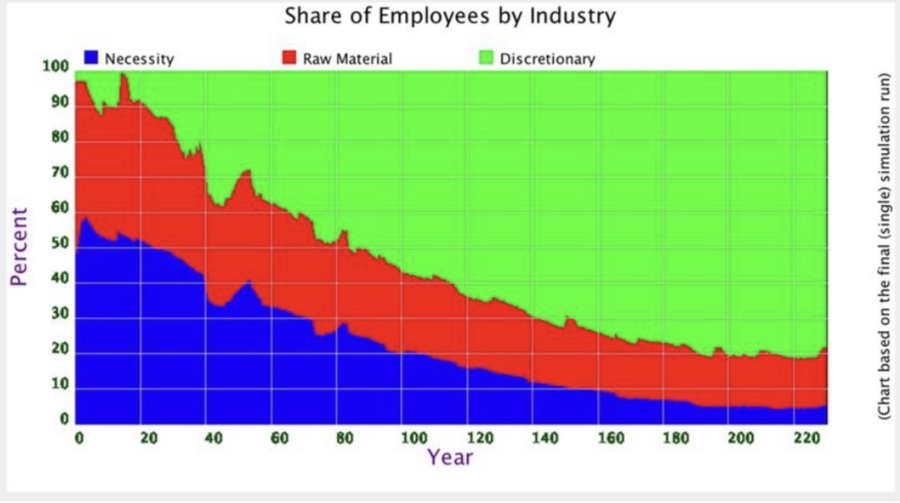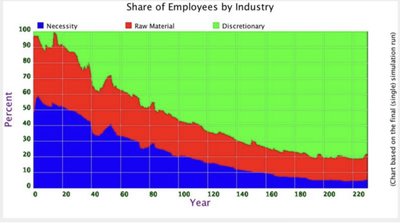A Macroeconomic Model of a Closed Economy 1.1.0
This model/program presents a “three industry model” that may be particularly useful for macroeconomic simulations. The main purpose of this program is to demonstrate a mechanism in which the relative share of labor shifts between industries.
Care has been taken so that it is written in a self-documenting way so that it may be useful to anyone that might build from it or use it as an example.
This model is not intended to match a specific economy (and is not calibrated to do so) but its particular minimalist implementation may be useful for future research/development.
It is possible for the program/simulation to produce an undesired result in which a population starves and a simulation is exited early.

Release Notes
This version adds a graphical user interface (GUI) to the program that runs the model. The GUI allows the user to adjust some parameters and also allows the program to be reset after simulation runs so that other simulations can be run. Allowing some adjustable parameters can give the user a broader idea of potential uses/implications of the three industry model.
If, for example, launching the program from a terminal, the program does not accept any input parameters (but the GUI allows adjustments) and the program does not write output to files (results are displayed on graphs in a window).
An apache ant build file has been included for compiling the program.
GUI Adjustable Parameters
Allow zero sale price:
If selected/allowed, the occurrence of zero sale prices become likely after around 220 years. Zero sale prices invalidate the GDP calculations. Zero sale prices affect the equilibrium that is reached for longer simulations.
Number Of Simulations To Run:
Users can select to Run 1, 5, 10, 15, 20, or 25 simulations. Expect 10 simulations to take 1-4 minutes. When multiple simulations are run the results are graphed overlapping which can give a good visual of rough statistical tendencies of the simulations.
Number Of Starting Adults And start of Population Plateau:
Adjusting these values affects the population in the simulation. The higher above the start of the population plateau the simulation population is the lower the probability of couples having new kids.
Adjusting the duration of the simulation:
Selecting a lower duration for simulation runs than the default 230 years will result in graphs with a more “zoomed in” detail. The results section is not displayed for simulations less that 230 years.
Selecting a longer duration will give an idea of the equilibrium that is reached when production rates stop increasing and the population stabilizes. I do not claim that the abrupt stop of the productivity rate increase after 230 years is realistic.
